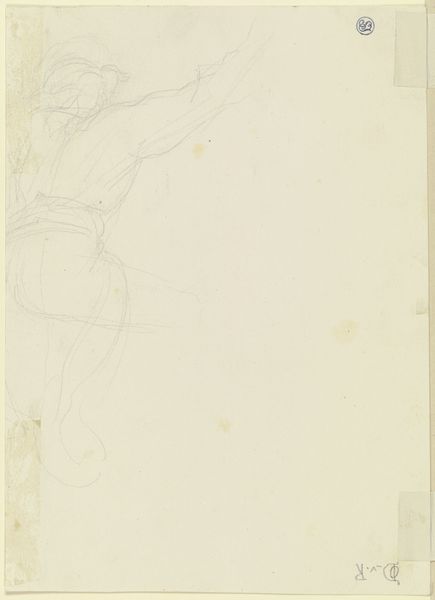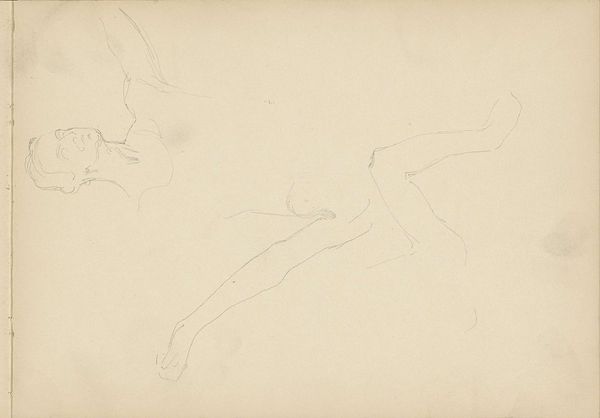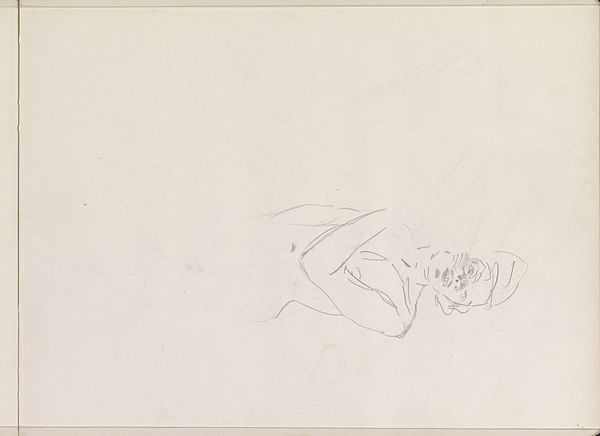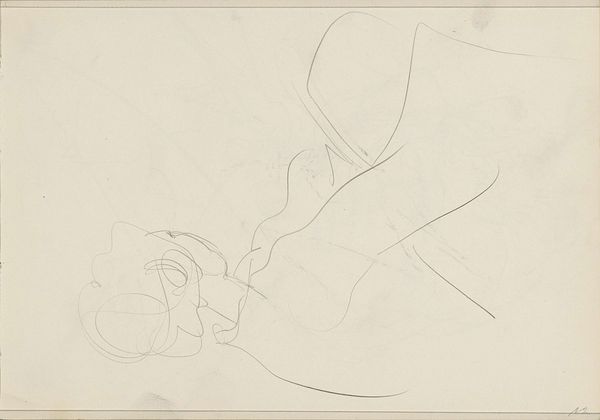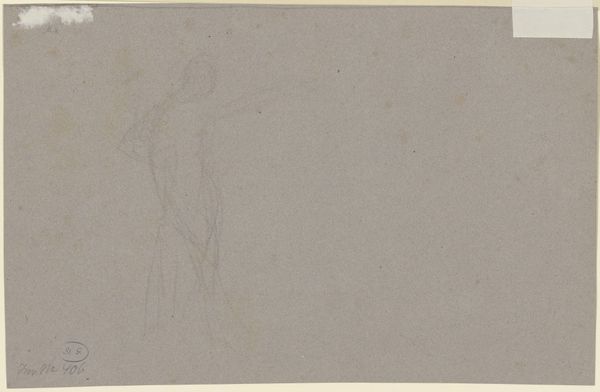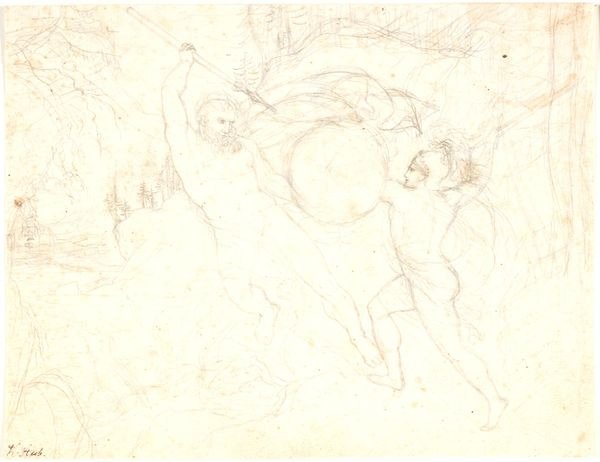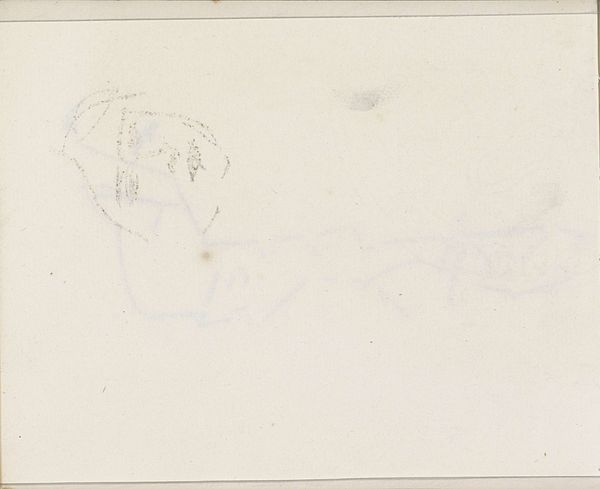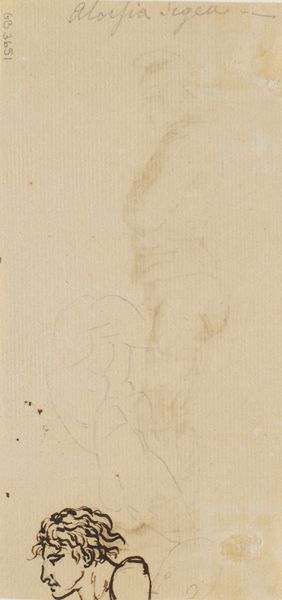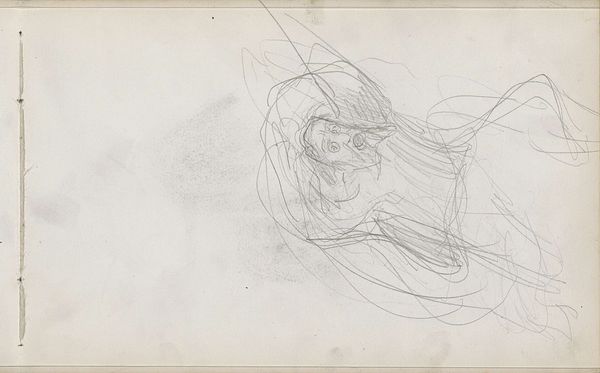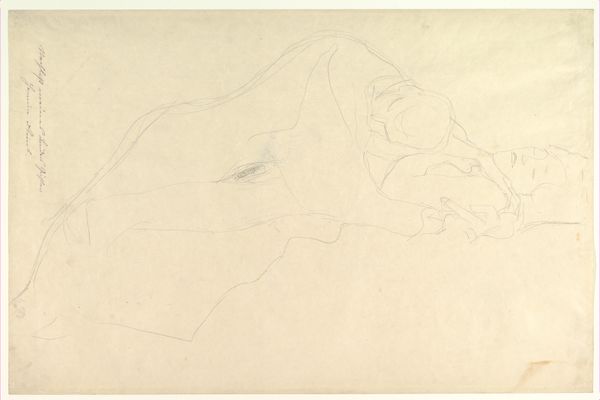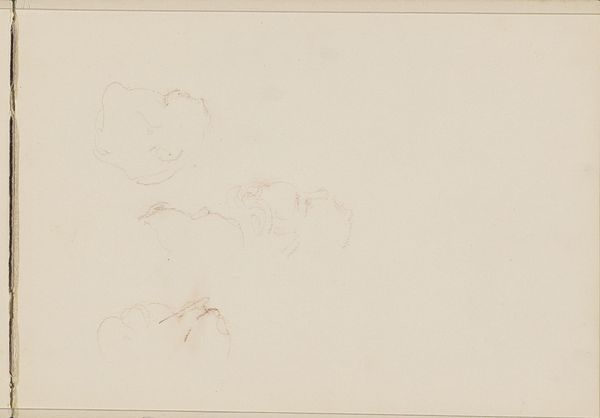
drawing, pencil
#
portrait
#
drawing
#
figuration
#
pencil
Dimensions: 121 mm (height) x 207 mm (width) x 90 mm (depth) (monteringsmaal), 126 mm (height) x 207 mm (width) (bladmaal)
Curator: This is "Pigeportraet," or "Girl's Portrait," by Agnes Slott-Møller, sketched between 1897 and 1898. Editor: Oh, that's fragile, like catching a half-remembered dream in a butterfly net. You can almost feel the delicate pressure of the pencil, trying not to wake her up. Curator: Exactly. The sketch, a study really, done in pencil, exemplifies Slott-Møller's engagement with figuration within portraiture. You know, there's a kind of quiet intimacy you get with sketches that finished works often lack. Editor: Well, and the choice of pencil is interesting here, isn’t it? Think of the source, where graphite comes from. Mined and processed. Makes me wonder what kind of paper she was using. Was it mass-produced, easily accessible? Or something handmade? It says a lot about who had access to artmaking. Curator: Fascinating point. Considering her position, probably the latter. What strikes me, beyond the materials themselves, is the captured feeling – a wistful pensiveness hanging about her unseen gaze. Slott-Møller excelled in conveying subtle psychological states. Editor: Maybe, or maybe it speaks more about artistic labor. Was this a quick sketch dashed off amidst other obligations, a fragment of stolen time? Or a dedicated study of light and shadow on a young face, reflecting hours of patient observation? Those two read completely differently to me, even before thinking about whatever interiority she tries to convey. Curator: See, I lean toward that intentionality, given her Symbolist leanings and meticulous artistry apparent elsewhere. This may be preliminary, but far from casual. The controlled chaos of the lines themselves – especially around the hair – conveys emotion in a modern, fragmented sort of way, which feels… conscious. Editor: And the gaps! It's what *isn't* there that intrigues. That unfinished quality almost dares us to consider what labor went UNrewarded here or dismissed, where production and reproduction can come together. Curator: It invites participation, though, doesn’t it? We fill in the blanks. Ultimately, "Pigeportraet" serves as both a testament to her skillful hand and also a reminder about accessing those vulnerable inner worlds through minimal means. Editor: Maybe for you, the mystery's the point. But seeing the raw marks here makes me reflect about that division of labor, as well as class, involved in artistic production, of who gets remembered for what reason and even gets erased or remains invisible as that work appears here to stay, or be forgotten for generations.
Comments
No comments
Be the first to comment and join the conversation on the ultimate creative platform.
